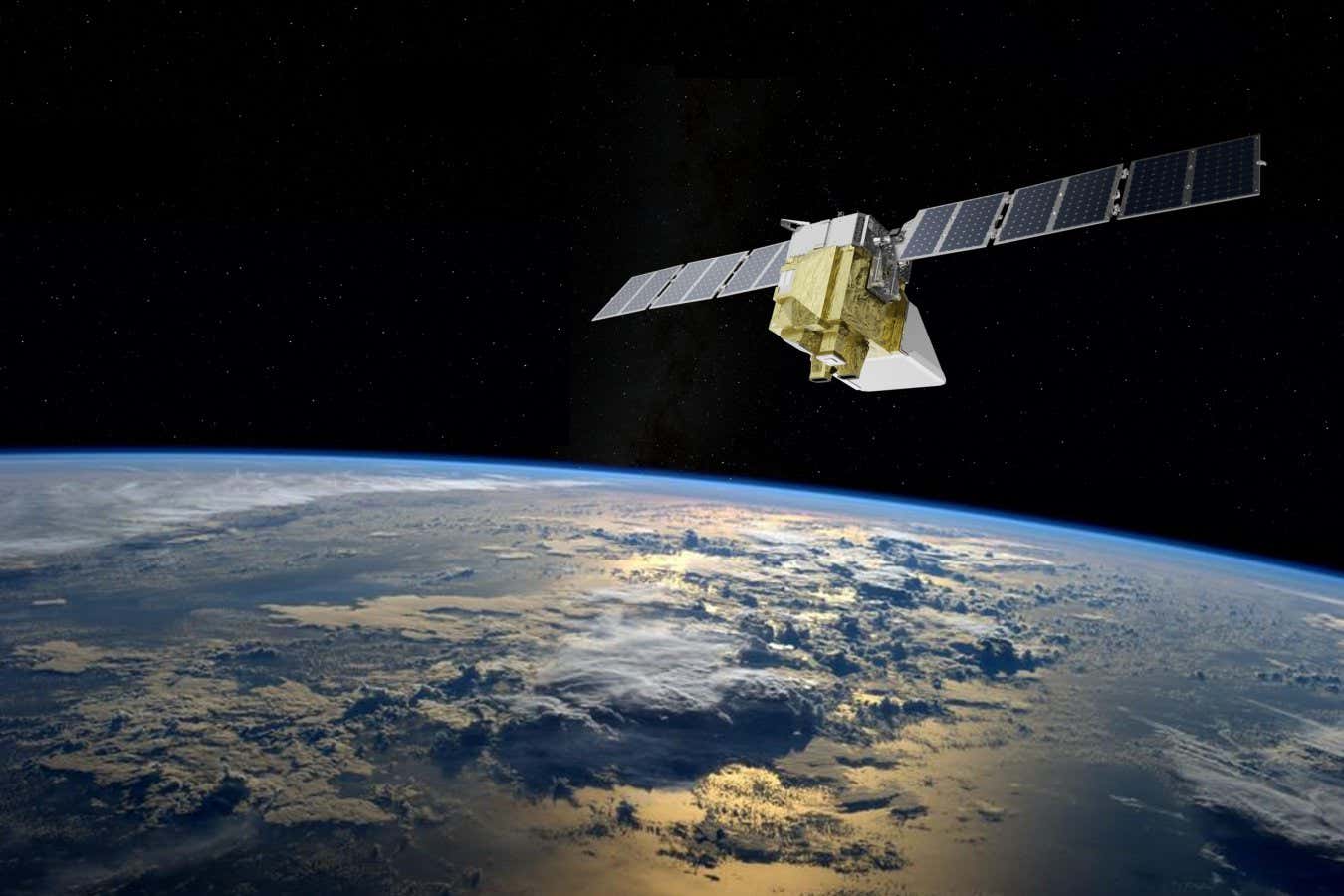
An artist’s impression of the MethaneSAT satellite
Environmental Defense Fund/NASA
A satellite known as MethaneSAT, anticipated to transform our view of methane emissions, has lost power less than a year and a half after it was launched.
MethaneSAT is “likely not recoverable”, according to a statement from the Environmental Defense Fund (EDF), the non-profit organisation that launched and operated the satellite. Its loss is a major blow to efforts to track and stop methane emissions, which are responsible for about a third of the human-caused rise in global temperature to date.
When MethaneSAT launched in March 2024, it joined a growing constellation of satellites designed to detect invisible methane emissions from key sources like oil and gas wells, livestock, landfills and wetlands. While some satellites zoomed in on individual sources and others could look across whole regions, MethaneSAT was uniquely suited to detect methane at the middle scale, making it ideal for spotting emissions from oil and gas production.
This view was intended to estimate methane emissions from regions known for fossil fuel production, like the Permian Basin in the south-western US. It would also help efforts to identify and cap the largest sources of the potent greenhouse gas.
“It’s a significant loss,” says Jason McKeever at GHGSat, a Canadian company that had planned to use MethaneSAT’s data to make decisions about where to point its own satellites. “MethaneSAT was uniquely positioned. It was in a special in-between zone.”
The satellite, which cost nearly $100 million to build and launch, started collecting data in June of last year and released its first detections of methane from oil and gas basins in November 2024. Researchers were working on ways to automate data processing so the satellite, which still orbits the planet 15 times per day, could deliver information on emissions in near real time.
“We had just started a cadence of releasing data every two weeks,” says Jon Coifman at the Environmental Defense Fund. “The satellite had been producing excellent information.”
According to the EDF’s statement, mission operations lost contact with the satellite on 20 June. “After pursuing all options to restore communications, we learned this morning that the satellite has lost power,” it said.
The MethaneSAT team is still investigating exactly what went wrong. It will continue to share the data the satellite was able to collect before losing power, as well as the algorithms developed to analyse it.
“We are looking at all sorts of options,” says Coifman. Launching another satellite is not off the table, he says.
Topics:
Source link : https://www.newscientist.com/article/2486631-a-crucial-methane-tracking-satellite-has-died-in-orbit/?utm_campaign=RSS%7CNSNS&utm_source=NSNS&utm_medium=RSS&utm_content=home
Author :
Publish date : 2025-07-01 20:30:00
Copyright for syndicated content belongs to the linked Source.








